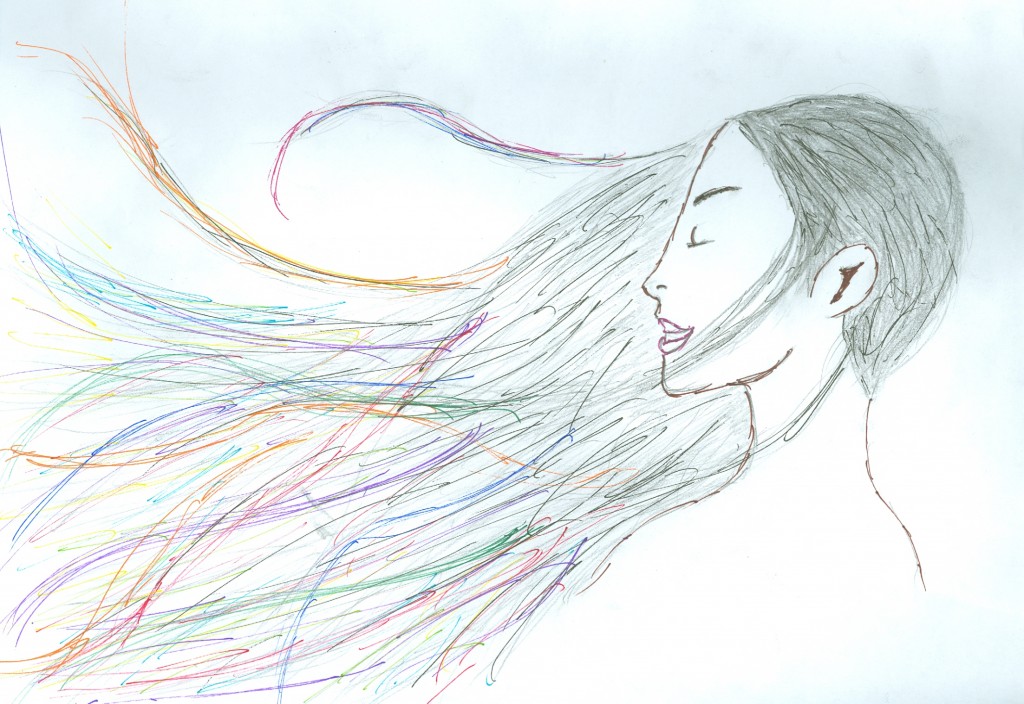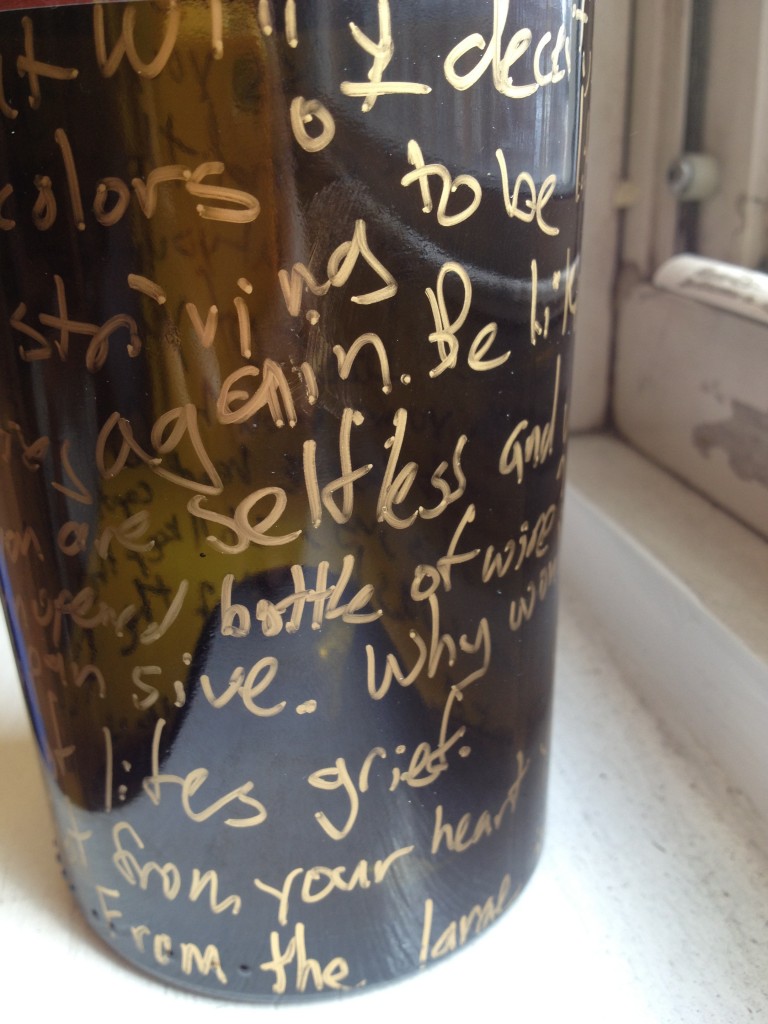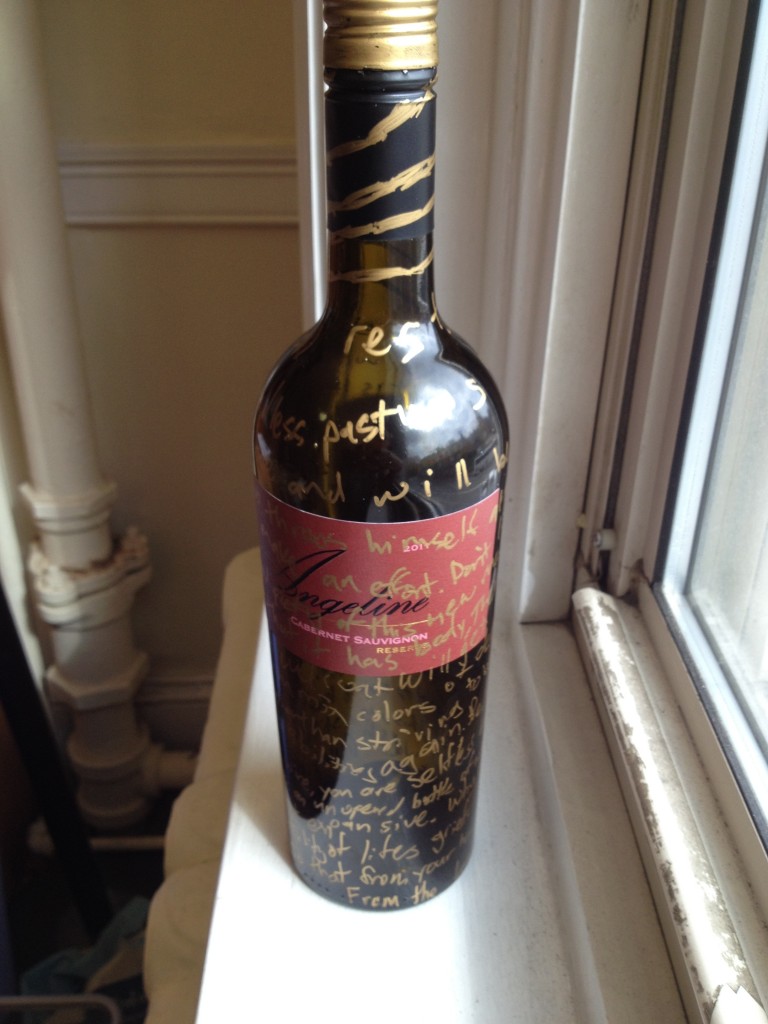“The story of Islam is not one story but many stories involving peoples of many different races, ethnicities, and cultures, professing conflicting interpretations. To acquire a correctly nuanced understanding of Islam and its role in Muslim societies, crucial questions one should ask include: Which Islam? Whose Islam?”—Ali Asani, Infidel of Love: Exploring Muslim Understanding of Islam
In one section discussion on the ways of interpreting Islamic Art and the differences in architecture, my teaching fellow, Axel Takacs, mentioned a saying, “Islam doesn’t say or do anything. It is context.” This has been a major theme of this course that has truly examined Islam from a cultural studies approach. At first I was very nervous about trying to put the ideas we discussed into an artistic form, as an ‘outsider’ of the religion, but I came to the understanding that practicing Islam is very unique for each individual. It is the lens of which one sees the world and lives through it.
Through Aesthetic and Interpretive Understanding 54: For the Love of God and His Prophet: Religion, Literature, and the Arts in Muslim Cultures, we responded creatively to the readings, lectures, and discussions. Reflecting back on this, it has been an incredible experience to really navigate through the different aspects of Muslim culture and then expressing myself and my personal understanding of these aspects. From coming into this class with very limited knowledge about Islam other than a couple weeks in middle and high school, I felt as if I really worked hard to connect with something that was very new and foreign to me. I took the cultural studies approach to heart and really tried to analyze as well as represent the ideas and themes of the course through this approach. Facilitating this process was my knowledgeable professor Ali Asani and Teaching Fellows Axel Takacs and John Zaleski who I cannot thank enough for this unforgettable experience. Though a challenging task for a horrible artist such as myself, I was encouraged and pushed to really absorb this material and present a personal understanding. Just like our discussions of “Islam” with a capital I or lowercase i, I felt as if I was gaining a personal understanding of the religion through culture and practice and not just a devotional or theological perspective on Islam.
While creating these creative responses I in no way tried to link them all to each other. Each one should be viewed as a stand-alone piece, illustrating what is described in the analysis. However, one should also understand that there are several major themes in Islam as well as in our discussion of Muslim culture that are featured in my responses. Unintentionally, these creative responses can be linked to one another in a variety of different ways. I will be discussing these major themes of the context, devotion to the Divine and prophet, remembrance and gratitude, and light as well as some of the interesting connections this has on Muslim culture.
An important component of this class, our discussions, and my eventual responses was the idea of context, one factor of the cultural studies approach. In Infidel of Love: Exploring Muslim Understanding of Islam, Asani argues, “…the political and social contexts in which a Muslim practices his or her faith are just as important or, some would argue, even more important than doctrines and rituals in determing how contemporary Muslims experience and interpret their faith” (15). Analyzing the religion and practices in the context of different communities. We learned about Islamic architecture in areas that were thousands of miles apart as well as conflicts in how accurately to listen to music and poetry. Though there really isn’t anything wrong about the differences in practices and that makes sense since religion is such a personal entity. For example, because of living in the age of electronic music production, I was able to fiddle and put together a recitation which sounded to me like transcendence. To a fundamental Muslim, this may not be accurate to how they feel listening to recitation but this personal experience was one that I wanted to explore. This also links into the idea of modernity and how religious practice has changed. Though the Qur’an is a single, indisputable text, the religion goes much farther than just the test. Islam is truly a product of its time and space. When reading about the Taziyeh, we observed how it has changed to be different things in different societies as well as even become a lesser-practiced thing in some others. For example, I aimed to modernize this and connect with the younger generation by introducing puppets in this style of theatre that is very different from puppetry. Watching the film about the Puerto Rican-American-Rapping Muslim convert really just taught me that being Muslim is just one shaper of the identity and all these other parts of your identity shape your practice of religion. I was utterly fascinated when we would talk about the differences in Muslim culture all around the world but also how unifying the religion is. Even though this idea of context is really important, the foundations of the religion will always be at the core. Applying my context as a non-Muslim to these projects about Muslim ideas, themes, and practices really gives me a different understanding of this religion which is the basis of the cultural studies approach. It is a look at how people practice and view the religion and not how it is just by the text.
Secondly, though seemingly obvious, my projects mainly revolved around the idea of devotion to the Divine and his prophet. The prophet, Muhammad, acts as a messenger for God and is recognized as the ideal person. Muslims aim to follow his sunnah and this shows through their practices of confirming their loved. This is a theme that comes up in Muslim art is the depiction of this undying as well as unattainable love that is so vivid and palpitating. Though poetry, visual art, song, etc. people express their individual praise. That idea is reflected in my amulet, recitation, wine ghazal, and sama projects. The projects connect with this idea in varying ways. Some of them identify more with the idea of attaining transcendence and a closer relationship between the self and God. Others discuss more the method of connecting with the Divine through sound. Another just explains the insatiable desire and love. However, these all center this theme of eternal devotion. Though not only has this affected religious practice, it also has a political aspect. In our discussions of the schism of Islam into Shia and Sunni, we see Muhammad and the family of the prophet being debated as political and spiritual leaders. These stories of the prophet such as the Miraj and Isra are ones that really struck me and are also very central to the religion. Through art, Muslims capture the mystical qualities of the Divine and the prophet as well as attempt to explain their undying devotion.
In one of the first few lectures, Asani mentioned the terms “shukr” (gratitude, faith, remembrance), “dhikr” (remembrance of God) and “kuf” (ingratitude). This idea of practice being a mechanism to remember God and to serve as a reminder of the ideas, lessons, etc. of the religion was another idea that was very important to me. I took practice that were of this function, such as the use of amulets, and put them in my own context and the context of what is important of their lives. This brought that idea of the Muhammad amulets which is in a previous post. This is also a theme of taziyeh, or the passion play of the battle of Karbala and the martyrdom of Hussein. This play is used as an opportunity to remind people of the events of this day and show love for the prophets’ family. Though it seems like a very basic idea, this act of remembrance and gratitude is incredibly prevalent in the Muslim community. It also is very settling to have the thought that God is all-encompassing and always around you. Coming from a personal standpoint, that support all around you of a divine figure is one that is very moving.
Communication in different forms, whether it is dance, singing, reciting, poetry, architecture, painting, or another medium, is also a common theme of my responses of varying disciplines. Throughout the course, the question of “How do you communicate ideas such as the love and beauty of the divine or the way modern Muslim women feel by the obligation to wear a hijab?” I had a very tough time trying to put some of these ideas into an explainable form, but the form of art is one that enables people to express themselves in an easier way. It seems as if different forms of art can be universal. When listening to some recitation I felt deeply moved even though I could not understand the words based on the language barrier. I found the expression of controversy in the Islamic community through art, such as with a graphic novel in the case of Persepolis or as poetry with the anthology of Muslim feminist poets, a very interesting concept. I attempted to reflect this with my response to a reading about sama as well as a response to a famous poem about female freedom. As well as controversy, this communication is also done to try and connect more deeply with the divine such as the case of Sufi music and dance and the idea of sama leading to ecstasy. This reflects more deeply this analysis of Islam through the cultural studies approach as many communities have different methods of practice. Also with the modernization of society and the religion, the religion and its communication have also changed. The Quran has been translated into hundreds of languages. The hip-hop Islamic movement is a rising trend as well. Art can facilitate this communication and that is what is really important about Muslim Art. I knew very little about the different art forms in Muslim culture which I now know to be incredibly thoughtful and beautiful.
Before I had done any creative responses I looked up and called my blog “نور” which is the Arabic of “the light”. Little did I know that this idea of light would be a recurrent theme in all our discussions. I mean light as a metaphor to learning, understanding, realization, freedom, and transcendence. I feel like many of my responses encapsulates one of those different metaphors of light. Nur Muhammad or “the Light of Muhammad” was one of the ways the prophet is described. It is a very interesting physical form that can be translated into a clear intangible idea. For some reason I am very attached to these ideas. This may be because I connect with them on a non-religious level as well because, as humans, we work towards understanding. So these efforts in art to work towards clarity and a deeper connection to their religion and to their God is beautiful. These different practices surrounding art and expression are means of understanding. For example, my blog post about sama addresses the idea of listening and the ecstatic effect of music/poetry to lead to a greater connection to the divine as well as a meditating realization about the self. Ghazals are a way to both produce and hear the seemingly indescribable love for the divine as well as transcend yourself for a moment which is compared to intoxication (another theme in one of my responses). I just saw this image a lot directly and indirectly when discussing different topics in class and think it is a very applicable imagery to Muslim art and culture.
These responses in no way are supposed to be representative of all the religion or applicable to every practice of that type. I simply aimed to find my own identity within the Muslim context. In a time where it is incredibly stigmatized to be a Muslim-American, it is important to really understand the people that we are around. I still have to take a step back and ask myself the same question Asani asks his friend in the Introduction of Infidel of Love: Exploring Muslim Understanding of Islam: How do you know what you know about Islam? I don’t think of myself as a master of Islam or even want to claim I know a great deal about Muslim culture. I wanted to take this class to learn and understand the people that are all around me who just happen to have a part of their identity that is different from mine. We life in a time where the person next to you may have a totally different ethnic, racial, cultural, religious, socio-economic, or other background and I think that is one of the most beautiful things in the world. That is why I try to understand other people through the misconceptions I see on the television and media. I believe art is very underrepresented as a means of understanding and connecting with people. Though I am not an expert in Muslim culture, I hope you can appreciate my effort in delving into something completely new and finding the amazingness of Muslim culture through art. In viewing my blogs, I hope you take these ideas into account and reflect how they are relevant in your situation, whenever, wherever, and whoever you are.





